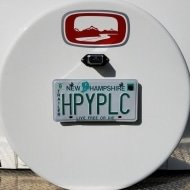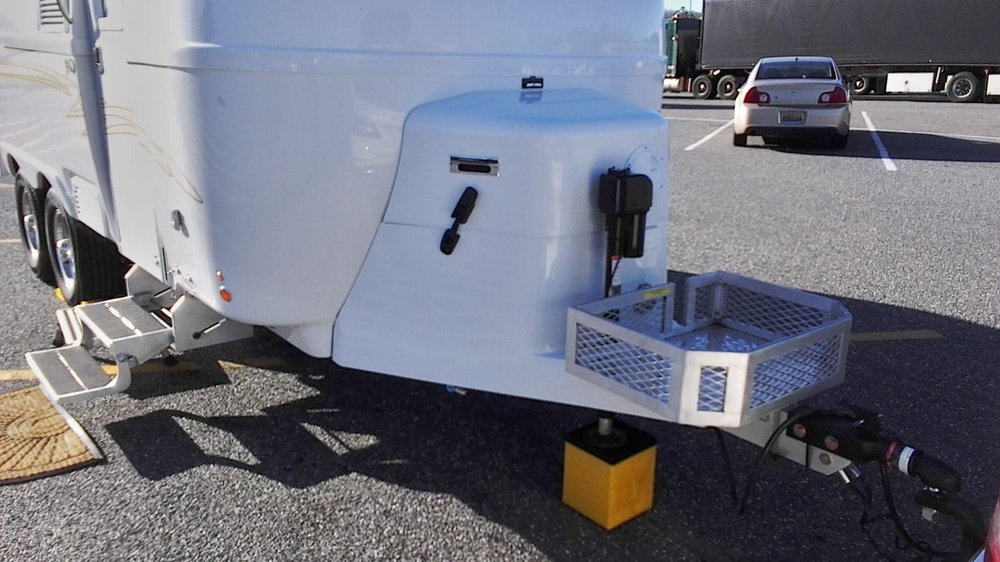Leaderboard
Popular Content
Showing content with the highest reputation on 03/11/2017 in all areas
-
What is Galvanic Reaction? - When two dissimilar metals are in contact and exposed to an electrolyte substance it causes one of the metals to lose ions and slowly consumes that metal. - It works much like a battery. One of the metals will become and act like an Anode(Negative) and the other a Cathode(Positive). This process will slowly consume the Anode and actually strengthen the Cathode. - Galvanic reaction occurs when an electrolyte combines with water. Depending on which electrolyte is present, it will completely(strong) or partially (weak) ionize with the water to form a strong or weak electrolyte substance. What is an electrolyte substance? Strong Acids Examples: Hydrochloric Acid, Sulfuric Acid, and other Acids Strong Bases Examples: Sodium Hydroxide, Calcium Hydroxide, and other Hydroxides. Salts Sodium Chloride Winter Road Treatment: - Different cities utilize a handful of different chemicals to treat roadways for ice. Most of these are from a form of chloride which does become an electrolyte once dissolved with water. TIP: It is always a good idea to clean these chemicals from any vehicle and/or camper when possible. What type of impact does this play on Aluminum? - When oxygen is present (in water), aluminum naturally reacts to form aluminum oxide and this is the key to its ability to resist corrosion. Unless exposed to a substance or condition in which destroys the protective layer, aluminum will remain resistant to corrosion. - When aluminum contacts another metal(steel for example), it sets in place the possibility of a galvanic reaction if an electrolyte substance comes in contact with the metals. What does Oliver do to prevent this natural process? A protective layer, cavity spray, is placed between the two metals. Zinc anodes are attached to the aluminum frame The Zinc becomes the anode part of the equation and if the galvanic reaction process takes place, it will consume the Zinc anode instead of the aluminum frame. How often should I check my Anodes? - Depending on where you live or where you travel you may or may not even have a galvanic reaction but it is still a good idea to inspect your anodes at least once a year and more if you start to notice that the anode is deteriorating.3 points
-
The Anderson's are really pretty strong but... If it's a severe front to back grade, then I use blocks. It really is best to have both for extreme circumstances along with chocks for all tires when on a hill. You will need a rubber mallet for the Anderson wedge to drive it in underneath the ramp section when on hills also. The Anderson's do hold well on hills as long as you drive the wedge in hard, if you don't, it can slide some and because it is an angled ramp, it will lower if the tire rolls on the wedge even a pinch. Anything over 3" really works best with blocks... One night I was setting up at right on 4" and with the ramp on the edge, it rolled off and shot the wedge up into the bottom of the car and cracked the face off of the wedge. So if you're off more then a few inches, blocks are really the safest way to go.2 points
-
Dave, the information Andersen provided would be correct, both aspects of it. Placing the leveler on the downhill side of the tire would be more susceptible to a "slide out" or "buckling", as you pull the trailer up onto it you would actually be pulling it off the inside of the AL, the distance between the wheels is fixed and by lifting the trailer the wheel actually comes up the hill, so you would be tipping the AL uphill, whereas putting it on the uphill side would cause it to dig into it. Then placing the mating chock under the downhill side solidifies the whole thing. Front to back is still leveled the same afterwards. Yes, I would use the power stabilizers to add to the base support too. This is where I like elongated blocks as opposed to squares, so I can place the long side in the direction of tip.2 points
-
This is the newest type of TPMS and this one in particular has me really interested. The system consists of TPMS sensors (replaceable batteries) Bluetooth booster (converts wireless to Bluetooth), 12 volt powered Bluetooth receiver (internal battery or USB or 12v adapter powered) App for smartphone. It has great features and you can see a flashing light and hear an alert from the receiver, and it will push a notification to your phone if there is a problem. I really like that there is no separate monitor to mount on your dash since I usually have my iPad Mini set up for navigation anyway, so this app can run in the background. Downside for me is that the transmitters aren't sealed. Upside is that they have a free five year replacement battery program and will send you new batteries and orings annually so you can keep them fresh and working well. .... http://www.minderresearch.com/battery-replacement-program/ Watch the video: .... http://www.minderresearch.com/tireminder/tireminder-smart-tpms-smartphone-based-tire-pressure-monitor-for-rvs/ Cost is $340 at Camping World for the four sensor model. ... http://www.campingworld.com/shopping/item/tireminder-smart-tpms-with-4-transmitters-for-rvs-motorhomes-5th-wheels-motor-coaches-and-trailers/86683 Note, this uses Bluetooth 4, which is standard in newer phones and devices since about 2011. You should check the specs for your device to be sure. Has anyone used one of these? Comments? Thanks, John Davies Spokane WA1 point
-
That level is pretty useless on the road. By the time a tire has deflated enough to show on it, the damage will probably be done. A TPMS will give you enough warning to remain in the Preventative Phase (plugging a hole or swapping on the spare), not the Cleanup Phase (picking up pieces of tread and fender flare from the highway). John Davies Spokane WA1 point
-
That looks like a good system, I've been watching the threads you guys have started on these so far and I do feel the need for it. But right now, we're still on the road and I have the Hopkins level on the Olli that I can always see thru the mirror. It's not a replacement for a good TPMS system but it does show me that the trailer is running smooth and level while on the road for starters.1 point
-
Canoe12, Here's an older photo, top of the Bulldog Hitch latch to the rear view camera is about 1 1/2", not 3 1/8", my mistake. Here's how the Elite II tows with empty tanks connected to the 2016 4X4 Tundra with 1 " rise ball mount and top of ball before loading is 22 1/8":1 point
-
Steve, Appreciate the fine research you put into finding information about our shades. Decided to go with a 4 window cord repair kit and "How To" instructional CD off of Amazon, since I'm going to install new cords in all four windows. Should receive the kit in about a week. http://www.dirtyblindman.info/ Plan to disassemble all four windows, prime & paint frames white, and reassemble with new cords. The kit was pricey at $25 delivered. Found replacement cord sold in quantity on Amazon, too. Will post about the project.1 point
-
Torque Specifications WHEEL LUG NUTS: 90 - 120ft lbs. Note: Oliver has set 110ft lbs as the standard as of 2023 year models & older. BULLDOG COUPLER: 80 ft lbs AXLE/U-BOLTS: 70 ft lbs SHACKLE BOLTS: 40 ft lbs1 point
-
Issue: A/C Fan runs when mode set to furnace Models Impacted: Dometic Penguin II equipped Information: The on-board thermostat communicates with the Dometic Penguin II A/C unit and the A/C unit then communicates with the Furnace. When the mode is set to Furnace the A/C fan should not run if set to AUTO. If the fan speed is set to LOW or HIGH, this will cause the A/C unit fan to run with the Furnace as a means to distribute the inside air flow. If you are experiencing this issue, please ensure that the fan speed on the A/C is set to AUTO. Resolution: Normal Operation *If the A/C fan runs when set to Auto and mode is set to Furnace, then another issue exists and the Dometic A/C unit should be inspected by a Dometic certified technician.1 point
-
One of the advantages of the long Oliver tongue is being able to open the tailgate. My Ram tailgate opens with no clearance problems when hooked up. The front part of the tongue even becomes a convenient step to get up into the bed of he truck.1 point
-
Recent Achievements









